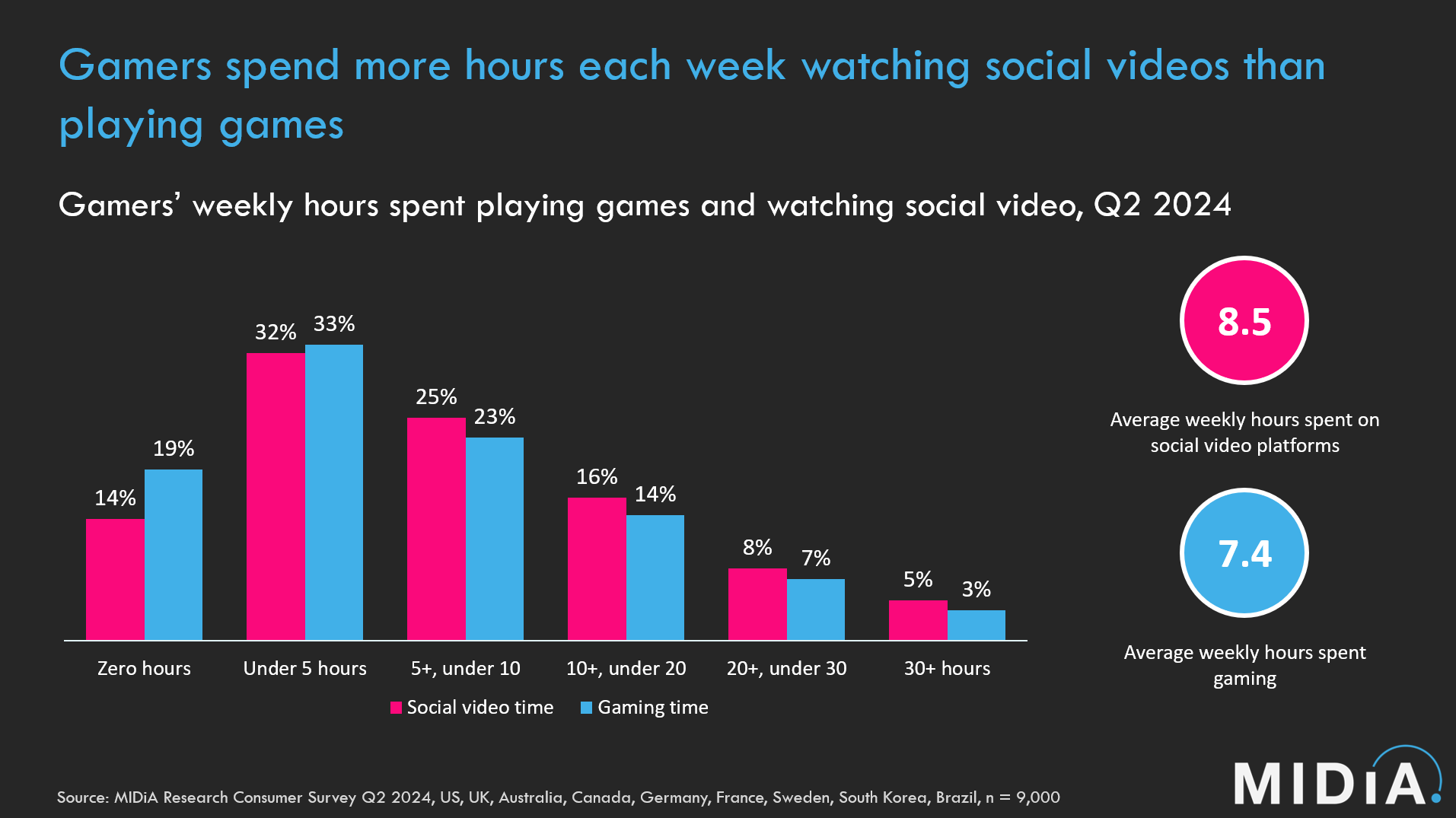Out-of-Game Marketing for Live-Service Games: The Role of Community Platforms in Player Retention
Reaching Players Beyond the Game
Over 3.4 billion people worldwide play video games, but what they do outside the game is now just as important as what they do inside it. According to a 2024 MIDiA Research report, gamers now spend an average of 8.5 hours per week watching gaming content on platforms like Twitch and YouTube, compared to 7.4 hours playing.

This shift in behaviour presents both a challenge and an opportunity: game publishers and platforms must think beyond gameplay and activate players across the broader media ecosystem.
Game publishers often focus their resources on in-game experiences, but attention is migrating to platforms like Twitch, YouTube, Discord, and TikTok. These are where fans spend their time, discover new games, and form communities. Yet these platforms are largely owned by third parties, leaving publishers missing out on monetization and engagement opportunities.
To grow and retain their audiences, studios and platforms should drive engagement across viewing platforms and social channels. It’s no longer enough to rely on gameplay alone. To win in today’s attention economy, game publishers must engage gamers wherever they are, especially outside the game.
Three Ways to Grow Game Engagement
Three reasons why engaging gamers outside the game can be a growth engine:
1. Inform new & existing players
Keeping players informed is one of the most effective ways to maintain engagement and build anticipation. Online events are a powerful channel for this. Hosting or joining events across platforms like Twitch, YouTube, or Discord can help communicate key updates such as upcoming game launches, new in-game events, feature releases, or IP collaborations.
2. Drive game viewers to your game
Twitch reaches over 35 million daily users worldwide, many of whom spend more time watching games than playing them. For developers and publishers, this represents an opportunity to bridge viewing and playing experiences. By linking viewership to in-game rewards, for example by offering exclusive items or bonuses for watching or participating in streams, publishers can encourage viewers to return to the game.
Multiplayer events and collaborations with streamers can also highlight the community aspects of the game, making it more appealing for new players. Additionally, paying attention to viewer and streamer feedback provides valuable insights that can directly inform game improvements and future content updates.
3. Engage lapsed players
Many in-game engagement systems like daily challenges, battle passes, and XP progression, are designed for players who are already active. However, once players stop playing, these mechanics lose their reach. Re-engaging lapsed players requires meeting them on social and video platforms.
Campaigns on Twitch, Discord, TikTok, and YouTube can help reconnect players to the game world. These might include community events that highlight new content or features, or initiatives that pair active players with returning ones to unlock shared rewards. Such activations reintroduce the sense of progression and community that originally drew players in.
Extending engagement beyond the game reminds lapsed players that rejoining the game isn’t returning to where they left off, but stepping back into a game world that has continued to unfold.
Out-of-Game Player Engagement
What traditionally happened solely within the game environment now extends into live streams, social channels, and fan-driven communities. Gamers no longer just play, they watch, discuss, and co-create. For publishers and studios, this means the real competition for attention is happening across a network of platforms that shape player behaviour.
Activating that broader ecosystem is becoming essential to growth. Publishers that successfully (re-)engage players outside the game can create more resilient and connected communities.
At Ex Machina, we build interactive campaign platforms, Twitch integrations, and social-chat activations that connect players, viewers, and communities outside the core gameplay loop. By using real-time data, reward structures, and campaign logic, we help game publishers increase average playtime and reach new players.


.jpg)
.png)